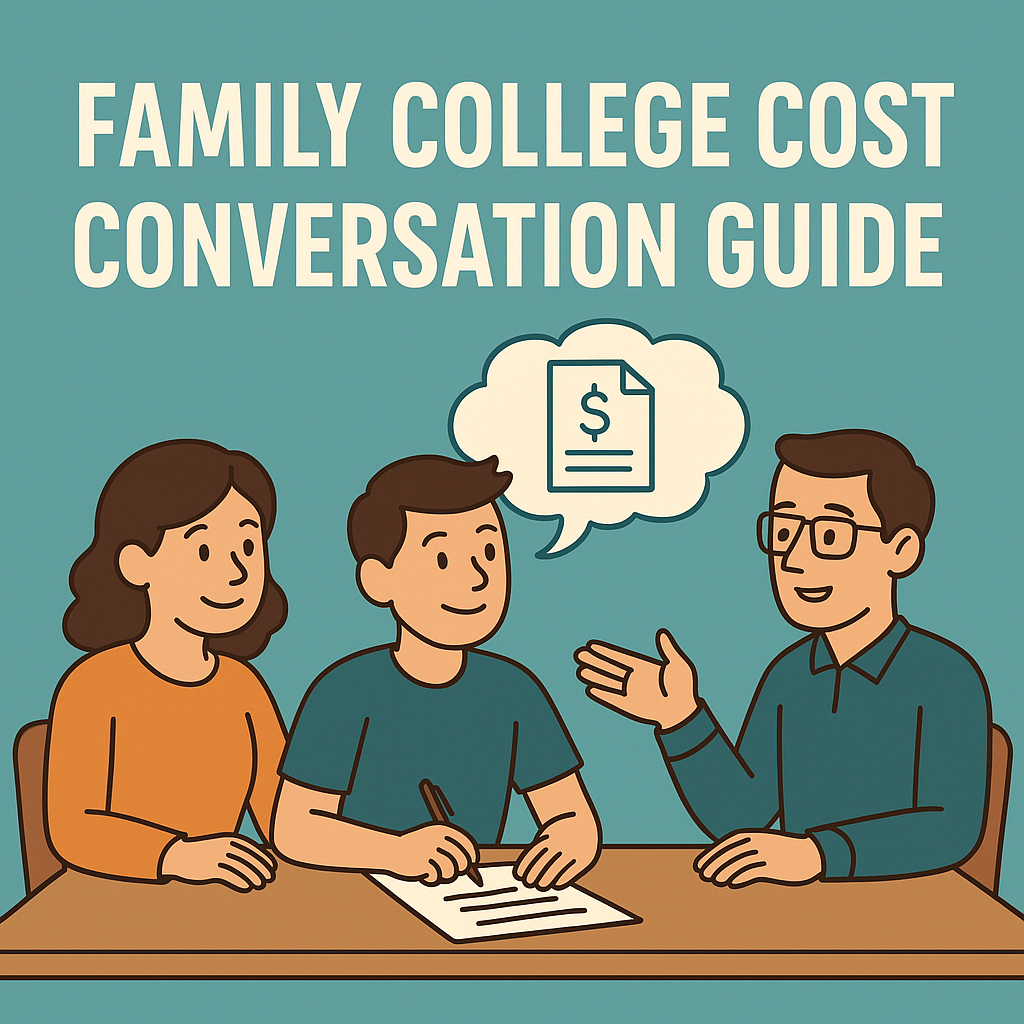
I know this blog feels like it’s jumping around — essays one week, college lists the next, and now finances? You’re not wrong. But I’m intentionally trying to hit the most critical advising topics up front, so counselors have tools ready for the year ahead. In my experience, the family college cost conversation is one of the most important – but not very flashy or fun to talk about – things for a counselor to take into account. The lists, essays, recommendation letters, etc. don’t matter much if there has been an invisible financial barrier from the outset.
Eventually I’ll group these into more thematic series (application season, decision season, etc.). For now, I’m building the foundation. If there’s something you’d like me to cover, just email me: jeremy@higheredification.org.
The Hardest Conversation — and One of the Most Important
It’s easy for students and families to get swept up in the college search — dreaming big, exploring options, and building a list of great schools. It can be a lot of fun and we as counselors can get caught up in the big dreams too. But no matter how thoughtful the process, there’s one topic that often gets pushed aside:
What can this student realistically afford?
And for some: Who’s actually paying for it?
Unfortunately, it is not uncommon for a student to get accepted to one or more schools they love — and then, in the spring, realize they can’t afford to attend. And for many students, that reality doesn’t come from carelessness. It comes from silence.
The most avoidable heartbreak in this process is realizing too late that the finances just don’t work. That’s why I tell students in every meeting:
Have the money talk with your family no later than junior year.
But here’s the thing: not every student has a family to talk to.
Some students already know their family won’t contribute.
Some are financially independent.
Some are in the lowest income bracket and will qualify for Pell Grants and full need-based aid at many schools.
This conversation isn’t only for middle- or upper-income households. It’s for everyone. Even students who expect full aid need to understand how that aid works, what’s guaranteed vs. not, and how to use that information to build a thoughtful list.
Whether you’re working with a student whose parents plan to pay in full or a student navigating this alone, clarity is essential — and empowering.
Family College Cost Conversation Guide
This isn’t a financial aid workshop or a loan calculator. It’s a framework… a way for students (with or without family support) to approach college planning with eyes wide open. It can be awkward, but sometimes our jobs as counselors is to help students work through awkward situations.
When to Have the Conversation
By junior year at the latest. If you don’t have a family to ask, bring it up with your counselor or a trusted adult. Don’t wait until after applications go out or financial aid packages arrive.
Why It Matters
Cost doesn’t have to dictate dreams — but ignoring it guarantees stress.
Even if you expect to qualify for full need-based aid (Pell Grants, institutional support, etc.), run Net Price Calculators. Learn how colleges structure aid. Ask what happens if your financial situation changes. Understanding this now will save time and heartbreak later.
What to Talk About
- Whether your family plans to contribute anything, and how much
- Whether scholarships or work-study will be needed
- Whether in-state or lower-cost options should be prioritized
- Whether aid is reliable, renewable, or uncertain
Questions You Can Ask
For students with supportive families:
- Do we have a budget for college?
- Are we counting on scholarships to afford certain schools?
- Have we used a Net Price Calculator together?
For students navigating this alone or without financial support:
- Who can help me estimate my aid using NPCs?
- Will I qualify for Pell or full need-based aid?
- What schools meet full need without loans?
- What if I don’t get enough aid — what’s my backup?
What to Bring to the Conversation (or to Your Counselor)
- A short list of schools you’re interested in
- Estimated costs from Net Price Calculators
- Any expected family contribution (or confirmation that there won’t be one)
- A reminder that this is just a starting point
What to Do After
- Revisit your list based on financial fit
- Make sure at least one anchor school is affordable with no or minimal debt — even if everything else falls through (see my post about a college lists to learn about anchor schools)
- Talk with your counselor about scholarships, aid, and safety nets
About Scholarships…
Scholarships are amazing — but they shouldn’t be the foundation of your plan.
You can hope for them. You can apply for them. But don’t build a college list that only works if a scholarship happens. Create a list that works either way — and if scholarships come in, that’s the cherry on top.
Final Thought
You don’t have to be a financial aid expert to support your students. You just have to be someone who opens the door to this conversation — early, thoughtfully, and without shame.
Whether a student has no support at home or a 529 plan waiting, this guide helps everyone pause and think about the financial side of their plan — before it’s too late.
If you want a printable version or need help customizing this for your school or community, just let me know. I’m happy to help however I can.
